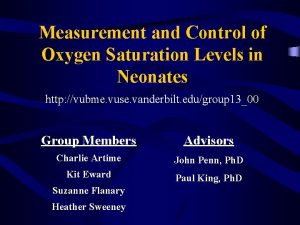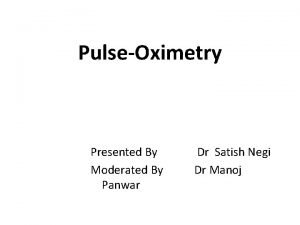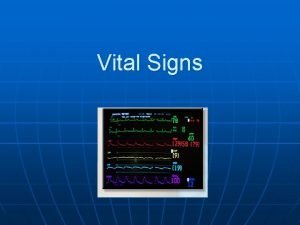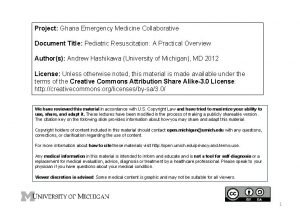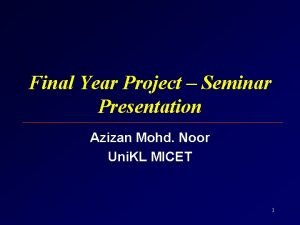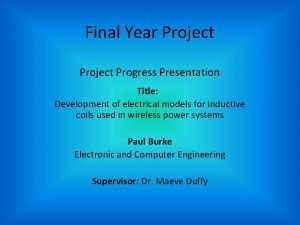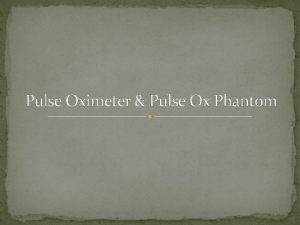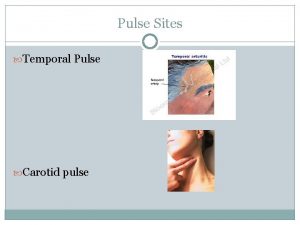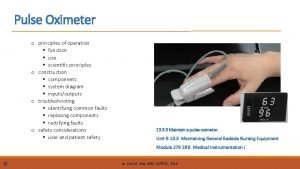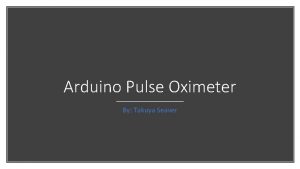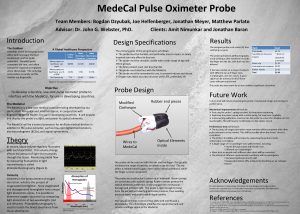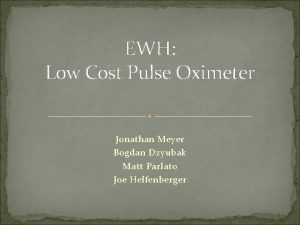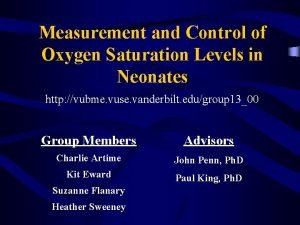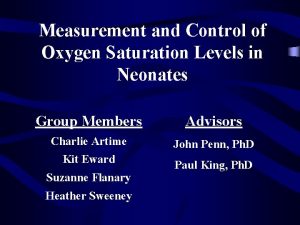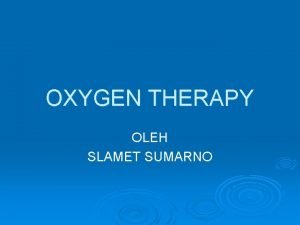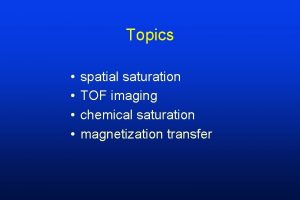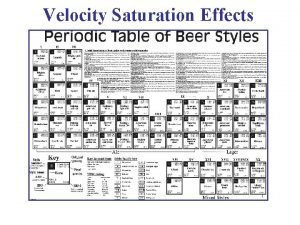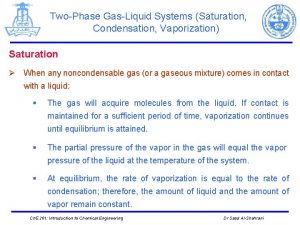Pulse Oximeter Measuring Oxygen Saturation Levels Final Presentation




















- Slides: 20

Pulse Oximeter Measuring Oxygen Saturation Levels Final Presentation May 14, 2008 Tony Succar & Mustapha Okaddi

Table of Contents Objectives n Background n Progress n Results n Responsibilities n Timeline n Conclusion n

Objectives n To build a pulse oximeter – To achieve the Oxygen Saturation Level in blood by using two LED’s as transmitters and a Photodetector as the receiver. n An algorithm is developed through Lab. View

Background n The theory of measuring O 2 levels in blood began in the 1930’s. – Observe the skin tones n n Bluish skin color = Low Oxygen level = BAD The Modern Pulse Oximeter was invented in 1978 by Dr. William New at Stanford University. – It was a breakthrough that paved the way for medical advances in the years to come. – Huge impact on prevention of diseases & illnesses.

Engineering Approach Photodiode

Principle n By calculating the light absorption of the two wavelengths, the processor can compute the proportion of oxygenated hemoglobin.

Principle n Oxygen saturation level is a direct function of the following ratio:

Stage 1: The beginning…

Stage 1 results n This setup was not effective – Numbers were inaccurate – Data was not stable – Sp. O 2 was very low, less than 50% n Solution – Stabilize the Photo Detector n Mount the Photo Detector and LED’s onto the table or onto the same plate.

Stage 2: Improvements Applied

Stage 2 results Ø New Plastic Fixture Numbers were greatly improved Ø Much more accurate Ø Much more stable Ø Ø However, problems persisted… Ø Although much more stable and closer to the expected value, still it was not stable enough: Ø 60% < Sp. O 2 < 95% Ambient light would creep in and effect the photosensor Ø The pressure on the finger was not stable Ø Ø This effects the accuracy of the data.

Stage 2 n Possible Solutions – Apply constant pressure to the finger – Block all external light sources from effecting the photosensor.

Stage 3: Final Design

Stage 3: Final Design


Lab. View Data from Final Design

Results and Data n Our final design was the best design. – Data is accurate – Numbers are relatively stable – Sp. O 2 is consistent n 90% < Sp. O 2 < 97% n New clip fixture n Overall, our project was a success! – Applied constant pressure to finger – Blocked all ambient light from effecting photosensor

Responsibilities n Both of us met at the lab many times the past several months to build and test the oximeter. n Both of us worked together on the Lab. View program and simulated it with the oximeter.

Time Line

Any Questions or Comments? ?
 Normal oxygen saturation by age
Normal oxygen saturation by age Biolab oximeter
Biolab oximeter Pulp oximeter
Pulp oximeter Oximeter
Oximeter Careplex vitals oximeter
Careplex vitals oximeter Chapter 16:4 measuring and recording respiration
Chapter 16:4 measuring and recording respiration Chapter 16:7 measuring and recording blood pressure
Chapter 16:7 measuring and recording blood pressure Chapter 15:4 measuring and recording respirations
Chapter 15:4 measuring and recording respirations Chapter 14:7 measuring and recording blood pressure
Chapter 14:7 measuring and recording blood pressure Apical pulse
Apical pulse Measuring and recording vital signs
Measuring and recording vital signs 2009 delmar cengage learning
2009 delmar cengage learning Oxygen levels in children chart
Oxygen levels in children chart Vitals normal range
Vitals normal range Costa's 3 levels of questioning
Costa's 3 levels of questioning Markstrat vodite strategy
Markstrat vodite strategy Project seminar presentation
Project seminar presentation Fyp presentation slides
Fyp presentation slides Senior project template
Senior project template Final presentation slide
Final presentation slide Fyp presentation slides templates
Fyp presentation slides templates

